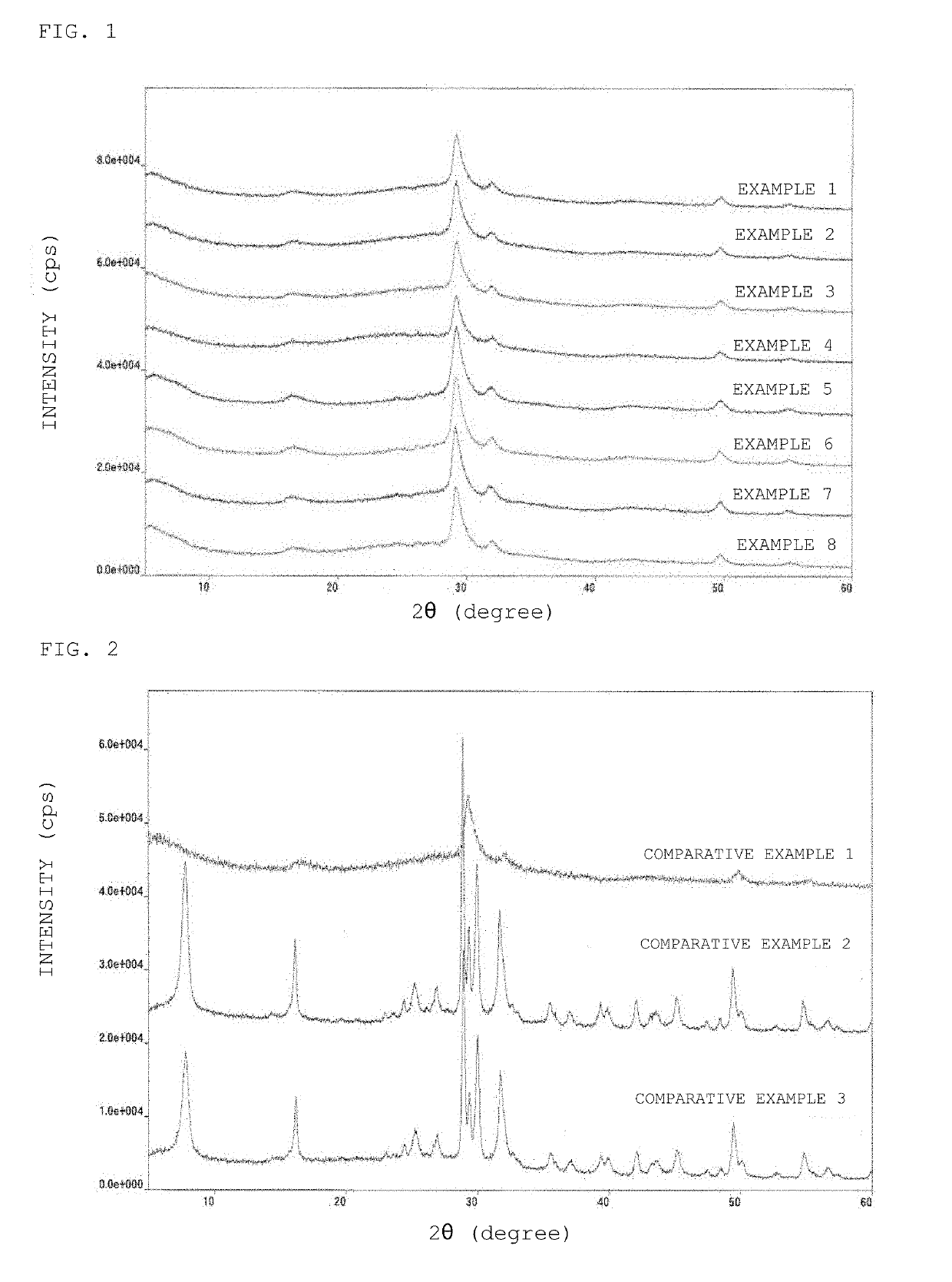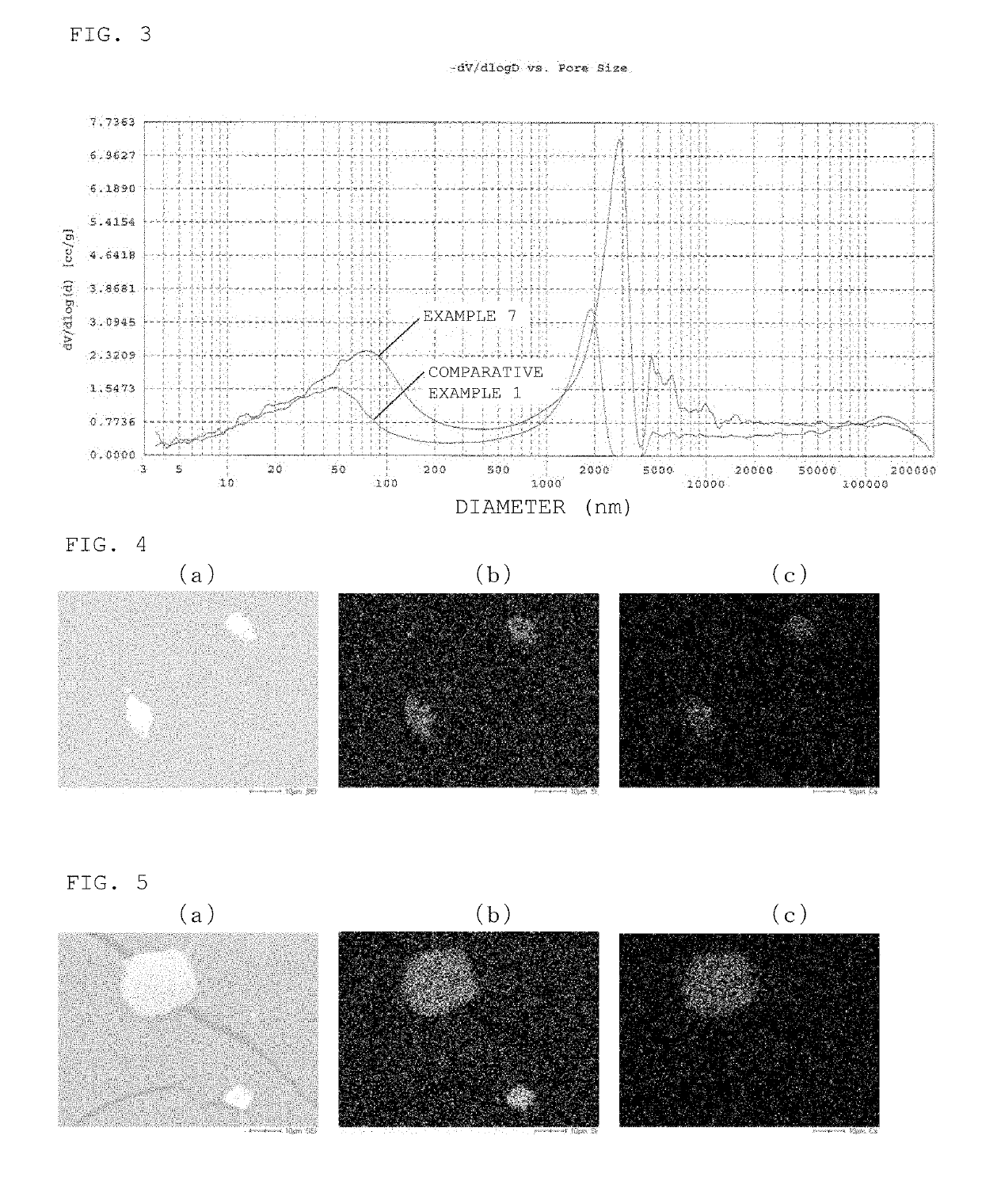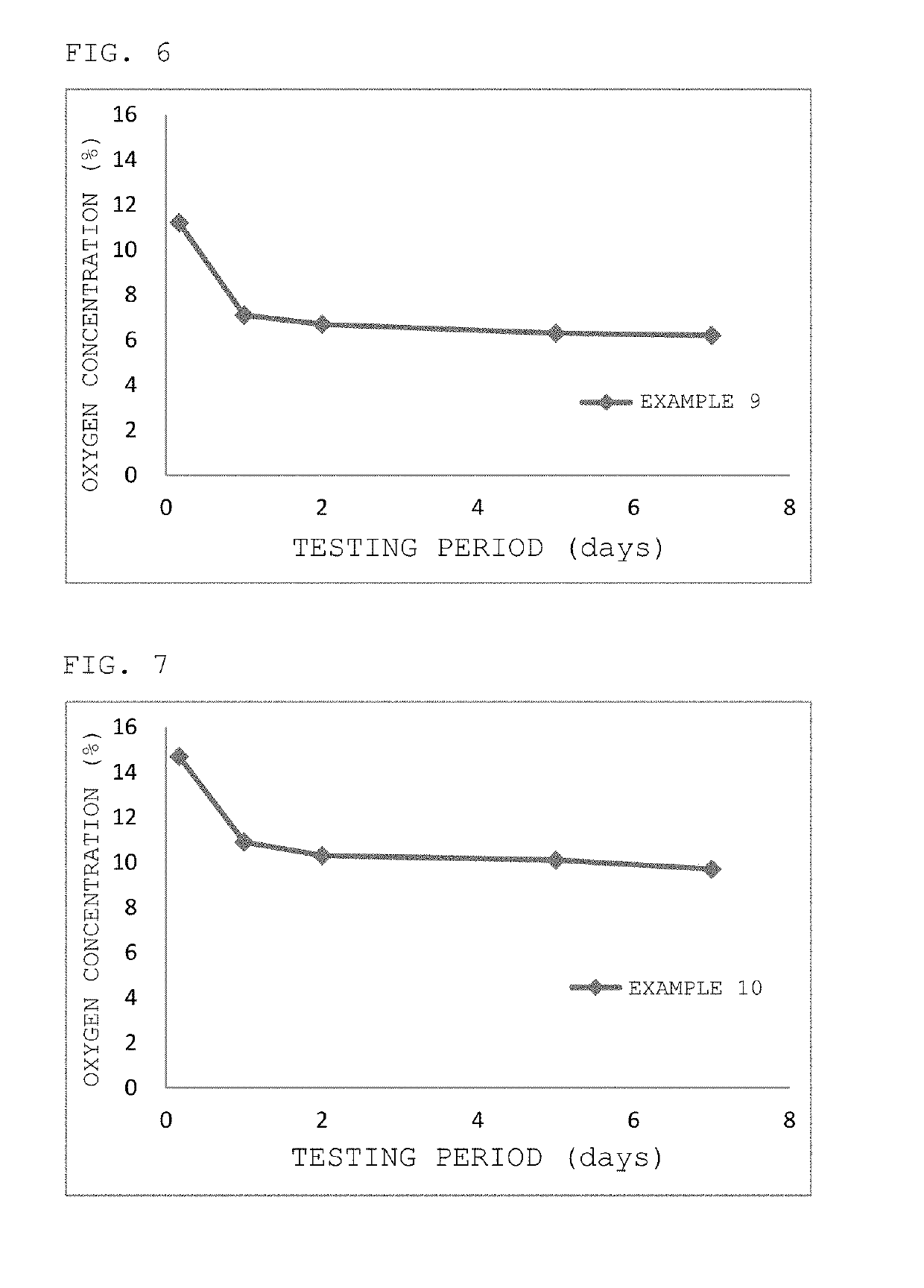Powdered tobermorite-type calcium silicate-based material and method for producing same
a technology of calcium silicate and tobermorite, which is applied in the direction of silicates, silicon compounds, alkali metal compounds, etc., can solve the problems of inapplicability, inability to avoid contamination by impurities attributable to wet grinding (or the media), and inability to achieve high purity, superior liquid absorption properties
- Summary
- Abstract
- Description
- Claims
- Application Information
AI Technical Summary
Benefits of technology
Problems solved by technology
Method used
Image
Examples
example 1
[0114]1786 g of water were placed in a 5 L reaction tank followed by heating to a liquid temperature of 72.5° C., adding 179 g of calcium chloride and completely dissolving the calcium chloride. Next, 119 g of 48% sodium hydroxide solution were brought to a volume of 171 mL with water and then dropped into the reaction tank over the course of 30 minutes. Following completion of dropping, 371 mL of liquid of sodium silicate JIS No. 3 were brought to a volume of 1429 mL with water, and then dropped into the reaction tank over the course of 3 hours. Following completion of dropping, the liquid temperature was made to be 60° C. followed by aging for 1 hour. Following completion of aging, the pH of the reaction product was adjusted to 10.4 using 18% hydrochloric acid. After adjusting the pH, the reaction product was washed using a filter press and washing was continued until the electrical conductivity of the filtrate reached 250 μS / cm. After washing, ventilation drying was carried out a...
example 2
[0115]Example 2 was carried in the same manner as Example 1 up to the aging step, and the pH of the reaction product was adjusted to 10.0 using 18% hydrochloric acid following completion of the aging step. The reaction product was washed using a filter press after adjusting pH, and washing was continued until the electrical conductivity of the filtrate reached 250 μS / cm. Following washing, ventilation drying was carried out at 100° C. followed by going through a grinding step to obtain a powder of a tobermorite-type calcium silicate-based material.
example 3
[0116]Example 3 was carried in the same manner as Example 1 up to the aging step, and the pH of the reaction product was adjusted to 9.0 using 18% hydrochloric acid following completion of the aging step. The reaction product was washed using a filter press after adjusting pH, and washing was continued until the electrical conductivity of the filtrate reached 250μS / cm. Following washing, ventilation drying was carried out at 100° C. followed by going through a grinding step to obtain a powder of a tobermorite-type calcium silicate-based material.
PUM
| Property | Measurement | Unit |
|---|---|---|
| molar ratio | aaaaa | aaaaa |
| pore size | aaaaa | aaaaa |
| pore size | aaaaa | aaaaa |
Abstract
Description
Claims
Application Information
 Login to View More
Login to View More - R&D
- Intellectual Property
- Life Sciences
- Materials
- Tech Scout
- Unparalleled Data Quality
- Higher Quality Content
- 60% Fewer Hallucinations
Browse by: Latest US Patents, China's latest patents, Technical Efficacy Thesaurus, Application Domain, Technology Topic, Popular Technical Reports.
© 2025 PatSnap. All rights reserved.Legal|Privacy policy|Modern Slavery Act Transparency Statement|Sitemap|About US| Contact US: help@patsnap.com



